-
 Bitcoin
Bitcoin $117600
0.25% -
 Ethereum
Ethereum $4424
0.10% -
 XRP
XRP $3.101
0.50% -
 Tether USDt
Tether USDt $1.001
-0.01% -
 BNB
BNB $836.2
1.26% -
 Solana
Solana $188.8
2.11% -
 USDC
USDC $1.000
0.01% -
 Dogecoin
Dogecoin $0.2301
0.57% -
 TRON
TRON $0.3485
-1.00% -
 Cardano
Cardano $0.9209
-1.34% -
 Hyperliquid
Hyperliquid $46.72
-1.19% -
 Chainlink
Chainlink $22.62
4.84% -
 Stellar
Stellar $0.4275
-0.38% -
 Sui
Sui $3.761
1.91% -
 Bitcoin Cash
Bitcoin Cash $586.7
-0.25% -
 Ethena USDe
Ethena USDe $1.001
0.01% -
 Hedera
Hedera $0.2510
2.06% -
 Avalanche
Avalanche $24.21
2.22% -
 Litecoin
Litecoin $119.7
1.07% -
 Toncoin
Toncoin $3.450
1.06% -
 UNUS SED LEO
UNUS SED LEO $9.411
-0.93% -
 Shiba Inu
Shiba Inu $0.00001298
1.20% -
 Uniswap
Uniswap $10.98
3.25% -
 Polkadot
Polkadot $3.961
2.16% -
 Dai
Dai $1.000
0.00% -
 Bitget Token
Bitget Token $4.642
0.95% -
 Cronos
Cronos $0.1514
0.57% -
 Ethena
Ethena $0.7290
3.78% -
 Monero
Monero $254.1
7.69% -
 Pepe
Pepe $0.00001102
2.47%
How to create a Dogecoin wallet? What are the steps to store Dogecoin safely?
To safely manage Dogecoin, create a wallet, use strong passwords, enable 2FA, keep software updated, and store backups offline in secure locations.
May 09, 2025 at 05:07 pm
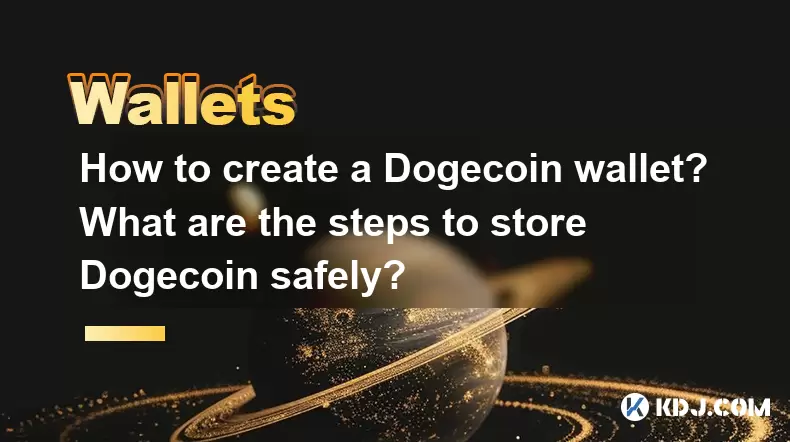
Creating a Dogecoin wallet and ensuring the safety of your Dogecoin are essential steps for anyone interested in participating in the cryptocurrency ecosystem. Dogecoin, originally created as a meme-inspired cryptocurrency, has gained significant traction and requires secure management to protect your investments. This article will guide you through the process of creating a Dogecoin wallet and provide detailed steps on how to store your Dogecoin safely.
Understanding Dogecoin Wallets
Before diving into the creation process, it's crucial to understand what a Dogecoin wallet is. A Dogecoin wallet is a software program or a physical device that stores the private and public keys required to interact with the Dogecoin blockchain. There are several types of wallets, including desktop, mobile, hardware, and paper wallets, each with its own set of advantages and security levels.
Choosing the Right Type of Wallet
The first step in creating a Dogecoin wallet is choosing the type that best suits your needs. Desktop wallets are software programs installed on your computer, offering a good balance between security and convenience. Mobile wallets are apps on your smartphone, providing easy access to your funds on the go. Hardware wallets are physical devices that store your keys offline, offering the highest level of security. Paper wallets involve printing your keys on paper, which can be a secure method if stored properly.
Creating a Dogecoin Wallet
Once you have decided on the type of wallet, follow these steps to create your Dogecoin wallet:
- Download and Install the Wallet Software: If you choose a desktop or mobile wallet, download the software from the official website. For example, Dogecoin Core is a popular desktop wallet. Install the software following the on-screen instructions.
- Create a New Wallet: Open the wallet software and select the option to create a new wallet. You will be prompted to set a strong password. Ensure that your password is complex and not easily guessable.
- Generate Your Address: After setting up your wallet, it will generate a unique Dogecoin address. This address is what you will use to receive Dogecoin. You can find this address within the wallet interface.
- Backup Your Wallet: Most wallets will provide an option to create a backup. This is crucial for recovering your funds if your device is lost or damaged. Follow the wallet's instructions to create a backup, which may involve saving a recovery phrase or exporting a wallet file.
Storing Dogecoin Safely
Storing your Dogecoin safely is as important as creating the wallet. Here are detailed steps to ensure the security of your Dogecoin:
- Use Strong Passwords: Always use a strong, unique password for your wallet. A password manager can help generate and store complex passwords securely.
- Enable Two-Factor Authentication (2FA): If your wallet supports it, enable two-factor authentication. This adds an extra layer of security by requiring a second form of verification, such as a code sent to your phone.
- Keep Your Software Updated: Regularly update your wallet software to the latest version. Updates often include security enhancements that protect against new threats.
- Use Cold Storage: For long-term storage, consider using a hardware wallet or a paper wallet. These methods keep your keys offline, significantly reducing the risk of hacking.
- Be Wary of Phishing Attempts: Always verify the source of any communication related to your wallet. Phishing attempts can trick you into revealing your private keys or passwords.
- Limit Exposure: Only keep the amount of Dogecoin you need for immediate transactions in online or hot wallets. Transfer the rest to a cold storage solution to minimize risk.
Securing Your Backup
Securing your wallet backup is crucial for protecting your Dogecoin. Here's how to do it:
- Store Backups Offline: Keep your recovery phrase or wallet file on a USB drive or paper, and store it in a secure location, such as a safe or a safety deposit box.
- Encrypt Your Backup: If you're storing your backup digitally, encrypt the file with a strong password. This adds an additional layer of security.
- Create Multiple Copies: Consider creating multiple copies of your backup and storing them in different secure locations. This ensures you can recover your funds even if one backup is lost or destroyed.
- Test Your Backup: Periodically test your backup to ensure you can restore your wallet successfully. This practice helps you verify the integrity of your backup and your ability to recover your funds if needed.
Monitoring Your Wallet
Regularly monitoring your Dogecoin wallet is essential for maintaining security. Here are some practices to follow:
- Check Your Balance: Regularly check your wallet's balance to ensure no unauthorized transactions have occurred.
- Review Transaction History: Look over your transaction history to detect any suspicious activity.
- Stay Informed: Keep up-to-date with the latest news and security alerts related to Dogecoin and your wallet software. This awareness can help you react quickly to potential threats.
Frequently Asked Questions
Q: Can I use the same wallet for multiple cryptocurrencies?
A: It depends on the wallet. Some multi-currency wallets support Dogecoin along with other cryptocurrencies, while others are designed specifically for Dogecoin. Always check the wallet's documentation to see if it supports multiple currencies.
Q: How can I recover my Dogecoin if I lose my wallet?
A: If you have a secure backup of your wallet, you can use it to recover your Dogecoin. Follow the wallet's recovery instructions, which typically involve entering your recovery phrase or importing a wallet file.
Q: Is it safe to store Dogecoin on an exchange?
A: Storing Dogecoin on an exchange can be convenient for trading, but it's generally less secure than using a personal wallet. Exchanges are prime targets for hackers, so it's advisable to transfer your Dogecoin to a personal wallet for long-term storage.
Q: Can I use a paper wallet for everyday transactions?
A: Paper wallets are not suitable for everyday transactions because they require you to import the private key into a software wallet to spend the funds, which can be cumbersome and less secure. They are better suited for long-term storage.
Disclaimer:info@kdj.com
The information provided is not trading advice. kdj.com does not assume any responsibility for any investments made based on the information provided in this article. Cryptocurrencies are highly volatile and it is highly recommended that you invest with caution after thorough research!
If you believe that the content used on this website infringes your copyright, please contact us immediately (info@kdj.com) and we will delete it promptly.
- Kazakhstan's Crypto Leap: Bitcoin ETF and Central Asia's Digital Finance Future
- 2025-08-13 12:45:19
- BlockDAG Presale Blazes Past $371M: Fundraising Frenzy Fuels Crypto Sensation
- 2025-08-13 13:05:21
- Meme Coins: Chasing the 2025 Surge – Which Will Moonshot?
- 2025-08-13 10:25:23
- Bitcoin's Wild Ride: Rally, Pullback, and What's Next
- 2025-08-13 10:25:23
- Bitcoin, Bitmax, and Institutional Demand: A New Era of Crypto Investment
- 2025-08-13 10:45:12
- Solana, ROAM, and Airdrops: What's the Buzz in 2025?
- 2025-08-13 11:35:13
Related knowledge
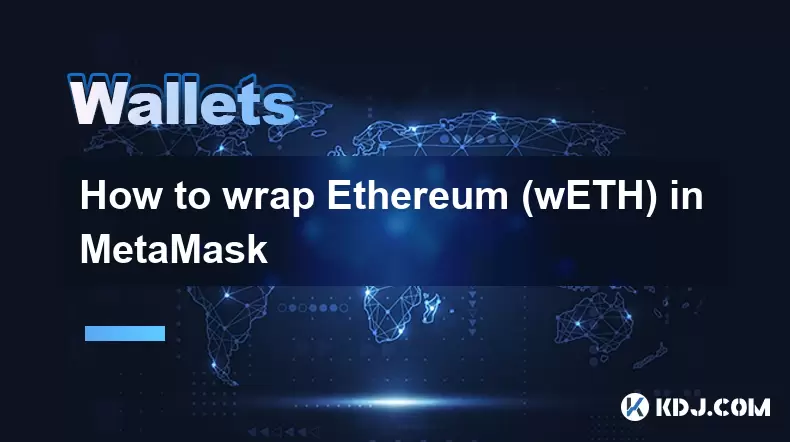
How to wrap Ethereum (wETH) in MetaMask
Aug 13,2025 at 11:36am
Understanding Wrapped Ethereum (wETH)Wrapped Ethereum (wETH) is a tokenized version of native Ethereum (ETH) that conforms to the ERC-20 standard, ena...
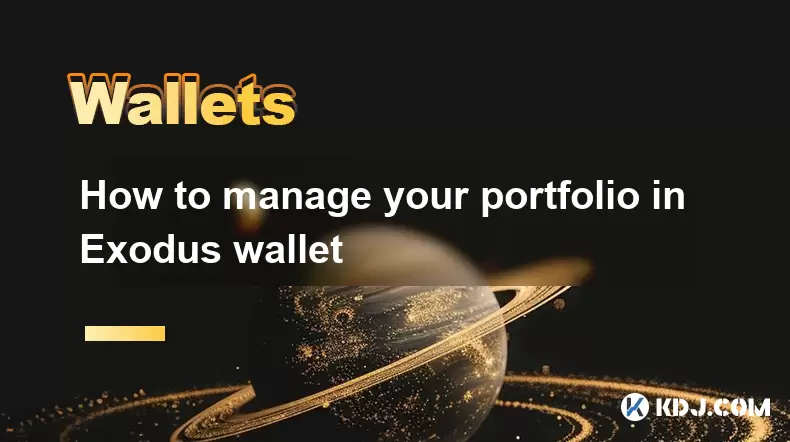
How to manage your portfolio in Exodus wallet
Aug 08,2025 at 10:07pm
Understanding the Exodus Wallet InterfaceThe Exodus wallet is a non-custodial cryptocurrency wallet that supports a wide range of digital assets. When...

How to manage your portfolio in Exodus wallet
Aug 13,2025 at 11:35am
Understanding the Exodus Wallet InterfaceThe Exodus wallet is a non-custodial cryptocurrency wallet that supports a wide range of digital assets. Upon...
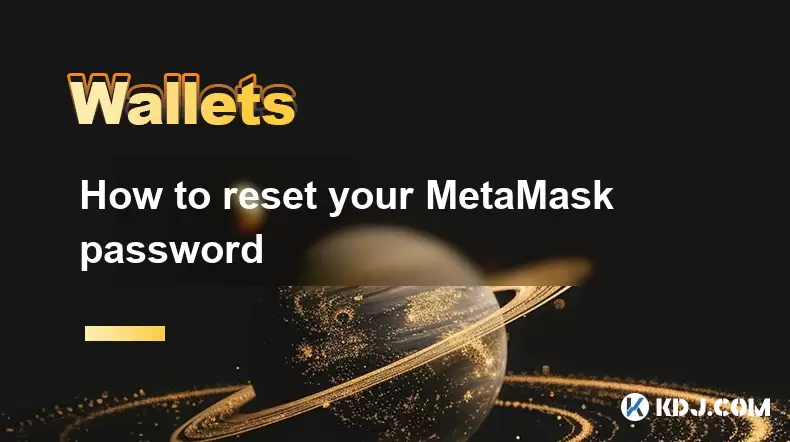
How to reset your MetaMask password
Aug 08,2025 at 01:28pm
Understanding the MetaMask Password Reset ProcessMany users confuse the MetaMask password with the seed phrase or private key, but they serve differen...

How to use WalletConnect with Trust Wallet
Aug 13,2025 at 01:07am
What Is WalletConnect and Why It Matters for Trust Wallet UsersWalletConnect is an open-source protocol that enables secure communication between dece...
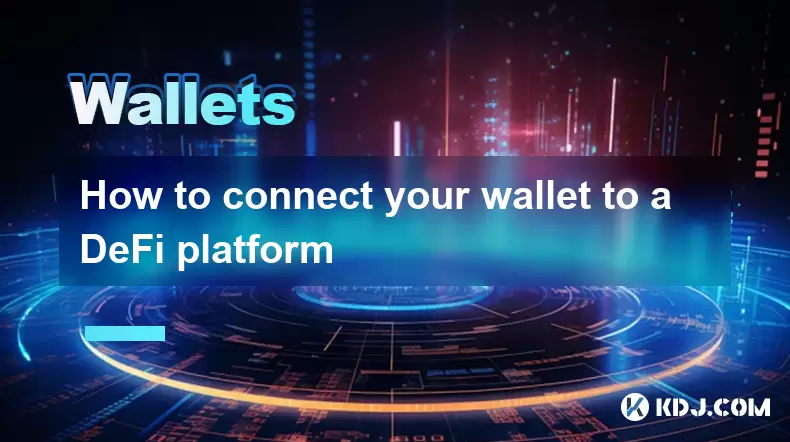
How to connect your wallet to a DeFi platform
Aug 13,2025 at 11:36am
Understanding Wallet Compatibility with DeFi PlatformsBefore connecting your wallet to any DeFi platform, it's essential to ensure your wallet is comp...

How to wrap Ethereum (wETH) in MetaMask
Aug 13,2025 at 11:36am
Understanding Wrapped Ethereum (wETH)Wrapped Ethereum (wETH) is a tokenized version of native Ethereum (ETH) that conforms to the ERC-20 standard, ena...

How to manage your portfolio in Exodus wallet
Aug 08,2025 at 10:07pm
Understanding the Exodus Wallet InterfaceThe Exodus wallet is a non-custodial cryptocurrency wallet that supports a wide range of digital assets. When...

How to manage your portfolio in Exodus wallet
Aug 13,2025 at 11:35am
Understanding the Exodus Wallet InterfaceThe Exodus wallet is a non-custodial cryptocurrency wallet that supports a wide range of digital assets. Upon...

How to reset your MetaMask password
Aug 08,2025 at 01:28pm
Understanding the MetaMask Password Reset ProcessMany users confuse the MetaMask password with the seed phrase or private key, but they serve differen...

How to use WalletConnect with Trust Wallet
Aug 13,2025 at 01:07am
What Is WalletConnect and Why It Matters for Trust Wallet UsersWalletConnect is an open-source protocol that enables secure communication between dece...

How to connect your wallet to a DeFi platform
Aug 13,2025 at 11:36am
Understanding Wallet Compatibility with DeFi PlatformsBefore connecting your wallet to any DeFi platform, it's essential to ensure your wallet is comp...
See all articles

























































































